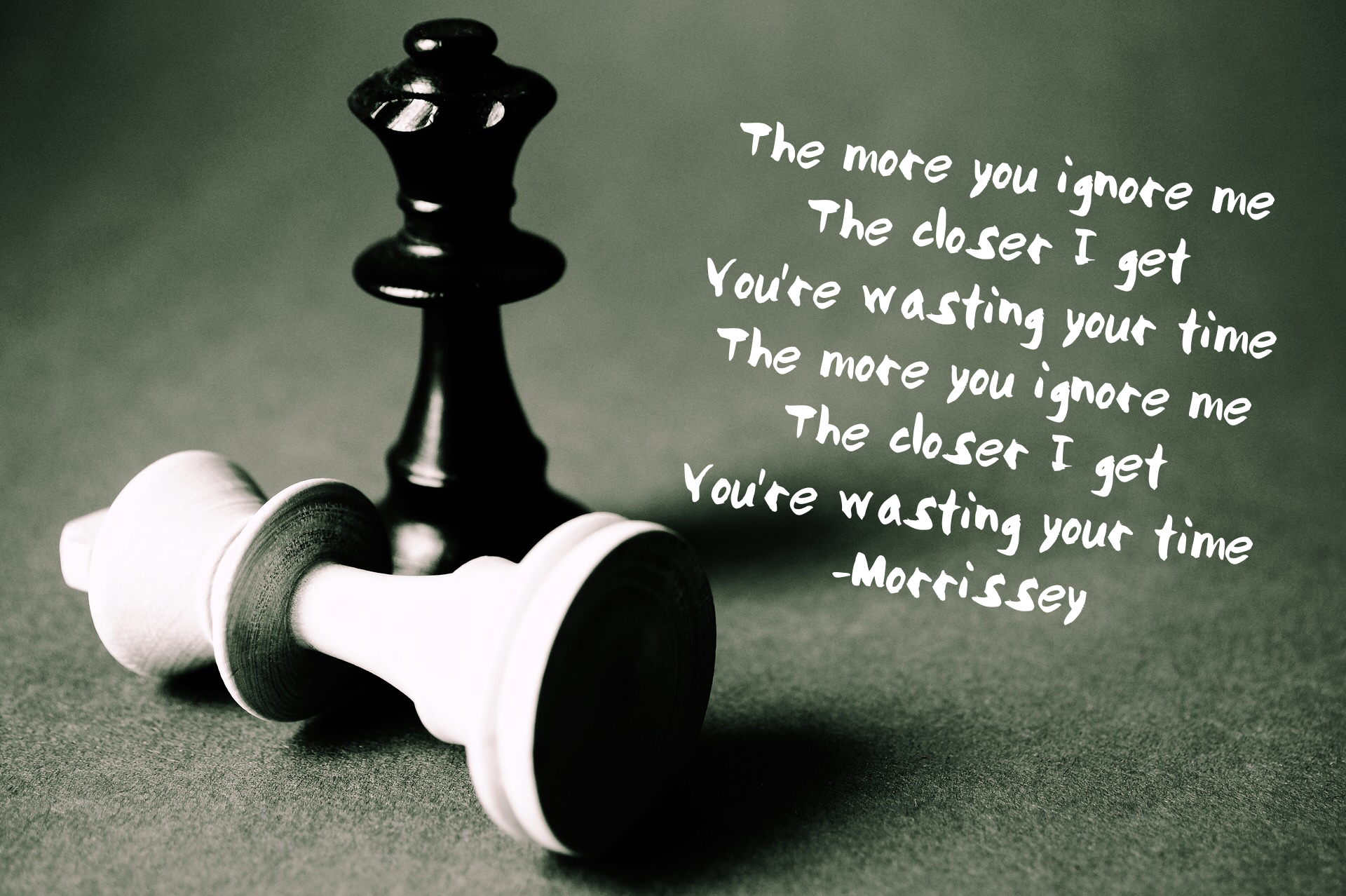WHAT’S WRONG WITH THIS PICTURE?
You know this person. By most measures, they have hit the karmic jackpot. They lead a successful life built on a foundation of achievement. Recognition rains down on them in the form of awards, promotions, and praise. Others look up to them and seek their advice, mentoring or friendship. And if that wasn’t enough, they make it look easy.
What if I told you this person might be harboring a dark secret? What if…
- When they look in the mirror they see a fake
- They swallow crushing self-doubt for breakfast and rock themselves to sleep counting failures
- The fear of being exposed grips them like a boa constrictor
Yet when the chips are down, they rise to the occasion. Problem solved, right? WRONG! Inevitably, they find a way to credit their success to anything except themselves and then it’s “All aboard!” the Faker McQuaker roller coaster again.
What’s going on?

Two psychologists, Pauline Clance and Suzanne Imes, gave this condition a name – Impostor Phenomenon, more commonly known as Imposter Syndrome. It is a feeling of phoniness in people who believe that they are not worthy despite evidence of high achievement. They credit their success to things like luck, the kindness of others or extreme effort and not as something they have earned or deserve.
This torturous state is hidden from everyone except their closest confidants. Maybe this is your significant other, spouse or partner. Maybe this is a coworker, relative or friend. And maybe, just maybe, if you’re like me, this is you.
THE CASE AGAINST IMPOSTER SYNDROME
ROUND 1 – OUTSIDE COUNSEL
Have you ever had a friend who you thought was amazing, but they were inexplicably down on themselves? You put on your best Alicia Florrick or Matlock impersonation and trot out Exhibits A, B, and C – incontrovertible evidence that would swing any jury in your favor. Proud of what a great job you did, you proclaim, “The Defense rests, your honor.”
I think we all know what happens next…
Your own client starts poking holes in the case!
- “Yes, but what about this…”
- “But, if not for that…”
- “Still, don’t you think…”
Here you are putting on a brilliant defense and there they go trying to convict themselves of the crime of Imposter-ism. You suspected this case would be a loser. So why did you take it? Because you are a decent, caring person. That’s the good news. The bad news is no matter how strong your evidence, how persuasive your arguments, IT…DOESN’T…WORK. Just ask my wife.
There are two reasons this approach is doomed to failure. First, it takes place on the wrong playing field. Your rock solid evidence is taken from other people’s perspectives so it is easily dismissed as misguided. The only playing field that counts is the one inside the defendant’s head. Second, watch how your insistence triggers their resistance. The harder you try to force them to see things your way, the harder they push back.
“But this is illogical and absurd. Why would someone act against their best interests?”
Let’s be honest with each other for a moment. We’ve all done plenty of things against our best interests and likely more times than we’d care to admit. Isn’t that why the emotion regret exists? And aren’t we all too familiar with the term “self-sabotage?”

ROUND 2 – SELF-REPRESENTATION
If debating someone out of Imposter Syndrome is a lost cause, perhaps the result will be better if the person suffering represents themselves. Been there, done that. Closer, but we’re still going to fail.
Here’s is a list of some of the things I tried:
- Really listened to all the great perspective and advice from my wife.
- Went on a list spree, like Why I shouldn’t doubt myself, My Achievements, and Things I had Overcome.
- Went all Stuart Smalley and used Affirmations. “I’m Good Enough, I’m Smart Enough, and Doggone It, People Like Me!”
- Went all Noah St. John and used Afformations, which are empowering questions designed to harness your subconscious thought patterns.
- Talked to a counselor and got their professional perspective and advice.
- Researched Imposter Syndrome and learned that many others, including successful celebrities suffer from it.
In the end, the result of all these efforts was the same as when I had someone else doing the convincing. Both granted small pockets of relief, but the crushing self-doubt would always come back with a vengeance. It felt like I was fighting myself and losing. The harder I tried to convince myself, the harder some part of me was pushing back.
Ignoring these feelings didn’t work either.
No matter what I tried, in the end it was “All aboard!” the Faker McQuaker roller coaster again.
“Excuse me. So when are we going to get to the part about the cure for Imposter Syndrome? Is there a commercial break soon?”
I appreciate you’ve come this far and are looking for a solution. Our destination is right around the corner.

ROUND 3 – CASE CLOSED
A quick review. External representation was a lost cause and self-representation didn’t fare much better. Ignoring didn’t help. So what’s an Imposter Syndrome sufferer to do?
The cure to Imposter Syndrome is to admit that you are right to feel like an imposter.
“What! Are you an idiot, Joe? I’m barely hanging on and you think admitting I’m an imposter will make things better?”
Well, not exactly. What I’m saying is the cure involves admitting that you are RIGHT TO FEEL like an imposter and that instead of fighting that feeling we will try a different approach.
Allow me to explain.
My eureka moment, like many other’s, came to me while I was relaxed and not thinking about much at all. On our family vacation in Orlando after a day or so to decompress, I was soaking in the sun and not having any imposter angst. As the ferry to the Universal theme parks chugged on, there was a quiet moment and my thoughts drifted.
I reflected on how Aikido techniques work WITH the energy of the attack and not directly against it, by allowing it to pass or blending with and redirecting it. In other words, you don’t attempt to directly defeat an attack like the Karate Kid’s wax on, wax off. Daniel’s blocks work by meeting the attack with enough force to stop it in its tracks. Effective, but different. Aikido works more like this. Picture a person running at you full speed and at the last moment you slip out of the way and maybe give them a nudge as they go careening past.
Next, I considered the principle of non-resistance. The energy you use to actively resist against a force creates a focal point for that force to move against you. Imagine a tug of war, with the rope being pulled in different directions creating the focal point of resistance. Who wins? Generally, the bigger, stronger, and more forceful person. However, even if you win, you end up expending a lot of energy because you are fighting directly against the other person, who is also struggling mightily.
Non-resistance is more like a 1-way fight. Imagine one person hell-bent on arguing and the other person calmly refusing to take the bait. No defensiveness, excuses or counterattacks, just an occasional nod or “ok” accompanied by a neutral facial expression. Notice how aggression turns to exasperation and eventually the “fighter” loses steam and disengages. I’m not here to judge this interaction, only to point out it illustrates an important point – it takes two to tango.
Now imagine the opposite. Instead of refusing to take the bait, the other person defends each attack vigorously. Then, at an opportune moment, they launch their counterattack!
- “Yes, maybe I did X, but what other choice did you leave me?!”
- “And another thing, I don’t appreciate it when you do Y!!”
- Ha-HA!!! Gotcha now!!!!
Notice how the resistance ends up fueling the attack like lighter fluid on a campfire. Cue exasperation, anger, and in some cases screaming. Hopefully it doesn’t escalate beyond that.
As we pulled into the dock, it dawned on me that maybe if Aikido worked with physical and verbal attacks between two people, it might just work for attacks you inflict on yourself, as well!

There is a saying, “Masakatsu agatsu,” which means “true victory is self victory.” It struck me that with Imposter Syndrome it’s difficult to win because you are battling your own mind accusations. And in many ways, your mind is the toughest opponent you will ever face. It is not easily fooled. Its beliefs and will to survive run deep. No matter how much you argue, it never gets tired of fighting. Maddening, right?
How can you defeat an enemy that lives inside you?
I don’t know what triggered my Imposter Syndrome or if I could have done anything to avoid it. What I do know is that trying to cure Imposter Syndrome by fighting it got me exactly NOWHERE. So with nothing to lose, I decided to try an admittedly counterintuitive approach.
Before we go any further, a warning:
THIS NEXT PART IS GOING TO HURT!
I didn’t like this part and you are not going to like it either. But sometimes to get where you need to go, the path is through the briar patch.

Most people, and I include myself, regularly avoid self reflection.
Why?
We avoid self reflection because it is extremely uncomfortable at best and painful and mind-torturing at worst.
In a study by psychologist Timothy Wilson from the University of Virginia (Go Hoos!), subjects were instructed to spend 15 minutes alone with their thoughts and feelings. In addition, they were given a device powered by a 9 volt battery that they could use to zap themselves. Ouch! The researchers doubted anyone would use it. Au contraire, mon frère. A surprising number of subjects zapped themselves instead of just sitting alone and reflecting. Most of the people who decided to shock themselves did so 7 times. One outlier used the device 190 times!
So if you are still on board, below is my cure for Imposter Syndrome.
Step 1. Pull up a Chair for the Imposter
I wrote at the top of a piece of paper:
“You are an Imposter!”
Next, without pausing, I wrote down the thoughts that popped into my head that supported this. This is not the time for debate or editing – just writing. Think stream of consciousness and go with the imposter flow. Cue unpleasant, humbling and confusing thoughts.
Now here’s the thing about negative thoughts. By writing them down, you are allowing them to be expressed more fully, which dissipates some of their power. Think slipping out of the way or the 1-way fight. The key thing to keep in mind is you are not agreeing that any of these thoughts are true, rational, or even proper English. However, you are acknowledging their right to exist by writing them down.
Here were a few of mine:
- There are others with greater expertise.
- You are missing some management skills.
- You sometimes get nervous about critical assignments.
- More often than you like, you feel confused.
- You don’t feel in control of your schedule or priorities.
- Luck has played a large part in your career advancement.
Step 2. Dig deeper!
At this point most people would begin to think about all the reasons why these sentences are WRONG. Instead, let’s assume some are wrong, some are right, and more than a few are not so black and white. Accept this, move on and concentrate on reasons why you might feel and think these things whether they are true or not. Read and reread what you have written down so far. Now write down any beliefs, thoughts and experiences that may be feeding your Imposter Syndrome. I told you this was going to hurt.
Step 3. Unearth the Value. Plan a new approach.
This is where I have to step off the ferry because only you alone can complete this part of the journey. Read and reread your list several times. Think about it over the next few hours or days or weeks. You may become aware of certain themes or patterns. How did they come about? And what purpose do they serve for the attacker inside your head? Understanding the value to your mind in thinking this way is the key.
By the way, for me this was the most painful part. It’s like the last mile of a marathon, the realization that your beloved has been unfaithful or any time spent watching the show Iron Fist. I should know, I binge watched the whole series.
Gradually, I started to see how I had built up patterns of behavior based on certain beliefs which served to protect me from getting hurt. These patterns started a long time ago. And now that I’ve identified them, guess what? I’m not a changed or new man at all. I’m still the same flawed, imperfect man. But what is radically different is that with my improved awareness of the purpose and power of my deep-seated beliefs and patterns, I can plan a better, new approach. You can probably guess what I will suggest next. Write the new approach down.
From time to time, I read everything again and reflect. It hurts a little less each time. Amazingly, my Imposter Syndrome has vanished. My hope is that anyone struggling with Imposter Syndrome finds a healthy way through the briar patch, any which way they can. This is what worked for me.
If you have any thoughts about Imposter Syndrome, what works, what doesn’t or some stories about dealing with it, I would love to hear from you.
P.S. Remember, in the immortal words of Joe Esposito, “You’re the best! Around! Nothing’s gonna ever keep you down…”


